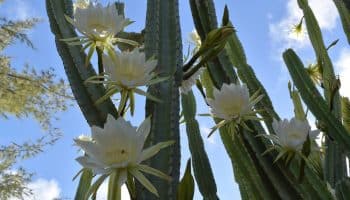The Ultimate Guide to
San Pedro
(Pachanoi, Achuma/Huachuma, Aguacolla, Gigantón, El Remedio, Cactus of the Four Winds)
Mescaline-containing cacti, while often legal to grow, are widely banned from human consumption. We do not encourage or condone the use of this plant where it is against the law. However, we accept that illegal drug use occurs and believe that offering responsible harm reduction information is imperative to keeping people safe. For that reason, this guide is designed to ensure the safety of those who decide to use San Pedro cactus as an entheogen or psychedelic.
Overview
01San Pedro has been an important element to the spiritual ceremonies of various indigenous cultures for thousands of years. In the context of these ceremonies, the San Pedro experience is known for being empathogenic (similar to MDMA) and potentially life-changing, promoting radical introspection, healing, and a sense of wonder and awe.
Traditionally, San Pedro has been consumed either on its own or with other plants in a ceremonial brew called cimora. While its use as a psychedelic is technically illegal in the US, the plant itself can be found decorating yards and gardens across the country. It can also be found in abundance at the witches’ markets of Peru (as San Pedro or Huachuma), Bolivia (as Achuma), and Ecuador (as Aguacolla or Gigantón).
Grow 1 Year's Worth of Microdoses in Just 6 Weeks
Third Wave partnered with top mycologists to create the world’s easiest and best mushroom growing program (kit, course, and expert support).
- Pre-sterilized and sealed
(ready to use out of the box) - Step-by-step video and text course
- Access to growing expert in community
- Make your first harvest in 4-6 weeks
- Average yield is 1 - 4 ounces (28-108g)
- Fits in a drawer or closet
- Enter info for Third Wave discounts:

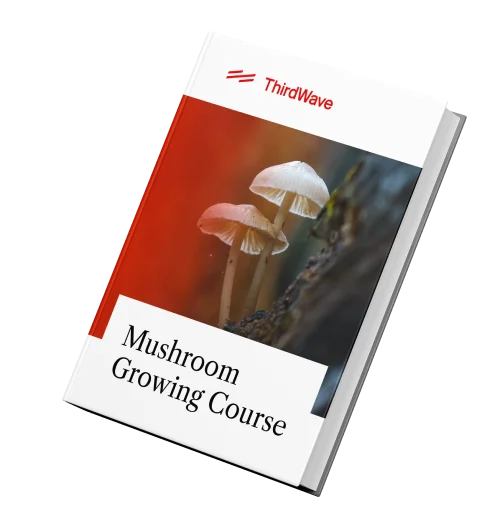
Grow 1 Year's Worth of Microdoses in Just 6 Weeks
Third Wave partnered with top mycologists to create the world’s easiest and best mushroom growing program (kit, course, and expert support).
- Pre-sterilized and sealed
(ready to use out of the box) - Step-by-step video and text course
- Access to experts in community
- Make your first harvest in 4-6 weeks
- Average yield is 1 - 4 ounces (28-108g)
- Fits in a drawer or closet
- Enter info for Third Wave discounts
Experience
02What to expect
After consuming San Pedro, most people start to feel the effects within 15-40 minutes, but it could take up to three hours to peak. Coming down can take another three hours, and the whole experience usually lasts 10 hours or so. San Pedro also usually leaves a lasting afterglow, which can make it difficult to sleep after the effects wear off. [1]
Many people are surprised at how different San Pedro (and mescaline, in general) is from other psychedelics they’ve tried. San Pedro can leave you feeling relaxed and in control, for instance, even if you’re tripping heavily. [2][3][4][5][6] One user compared its effects to MDMA, but felt they were “more amazing.” “Mescaline didn’t feel like rolling [being high on MDMA],” he said, “Rolling felt like mescaline.” The same user went on to say that it was “like all the best effects from all the drugs all put into one… the great body feeling and incredible empathy and understanding of ecstasy… the focus and energy and drive of acid… the journey effect that I always enjoyed from shrooms… It was the soberest we had ever felt in our life.”[4]
When the effects of San Pedro first hit, it’s common to feel drowsy or dizzy, often with a sense of tingling or electricity in the veins.[7][5] Nausea, vomiting, and perspiration are also common on the come-up.[8]
San Pedro usually produces visual effects, including whirlpools of colored light, flashes in the peripheral vision, kaleidoscopic patterns, and white, ghostlike outlines around people.[8] “Out-of-body” experiences are also common, as is synesthesia (e.g. “feeling” and “smelling” sights and sounds), mild depersonalization, and distortions of spatial awareness.[9][10][8][11][12] At the same time, ordinary things around you can appear more interesting, beautiful, and amazingly mystical—qualities that define the mescaline experience.[13]
All of this often culminates in a clear and connected thought, self-realization, empathy, and euphoria. However, “bad trips” and dysphoric symptoms may be more common among people who don’t pay attention to set and setting and/or have histories of mental illness.[14]
Did you know you can ingest San Pedro in many different forms, which can alter your experience? Check out our guide on consuming San Pedro to learn about different methods and our San Pedro experience blog to gather insights about the journey, the recovery, and where to try it.
San Pedro ceremonies
For safety and ethical reasons, it’s best to experience San Pedro in the context of a ceremony with a qualified curandero (healer), which are becoming more common in the West, in addition to the growing number of retreats in South America.
These ceremonies often last all night and are repeated over several days. In addition to San Pedro, curanderos may use other plants, including other cacti and succulents, lycopods (clubmosses), datura, brugmansia, and Isotoma/Hippobroma longiflora (aka the “Star of Bethlehem”).[8][7][15][16][17]
Ceremonies traditionally center on a “healing altar” or mesa, covered with “power objects”—ancient artifacts, staffs, stones, crosses, images of saints, and more. These are usually sorted into three zones or fields (campos) according to their energy alignment—positive (life-giving), negative (death-taking), or neutral.[8][15][18]
Before ingesting San Pedro, ceremony participants are “purified” with a bath of “spiritual flowering” or baño de florecimiento, and often snort tobacco. After, each person is diagnosed and treated by the healer, which might involve the invocation of spirits from both Andean and Christian cosmology and passing a sword or staff over the patient in the form of a cross.[8][19] Sometimes a guinea pig is passed over the body instead, then killed and dissected to determine the activity or source of an illness.[19][15]
Whatever takes place in the ceremony, cures are generally attributed to the plant as opposed to the healer or shaman. The healer is considered a facilitator, “activated” by the cactus to stimulate “the five senses of the patient in a familiar cultural environment” using music, perfumes, symbols, and other ritual elements.[8]
In a traditional ceremony, distinctions between the body and mind go by the wayside. Shamans may recognize the medical causes of disease—and even integrate pharmaceuticals into practice—but they’ll generally look beyond the strictly physical for an underlying spiritual basis for the illness.[8][1][16] Contemporary practitioners tend to frame this in psychosomatic terms, viewing “illness as a thoughtform” and the “guidance of the plant” as helping patients “to see the origin of [their] own illness without judgments or interpretations from others.”[20][21]
San Pedro, a sacred cactus of the Andes, has a rich history of ceremonial use. Learn more about San Pedro traditions in our latest article.
Effects
03Pharmacology
San Pedro contains highly variable concentrations of mescaline, which is densest in the outermost, greenest layer of the cacti’s flesh. [9][7][22][23][24][25][26][27] Like MDMA and 2-CB, mescaline is a phenethylamine, which puts it in a different class of psychedelics than the tryptamines (psilocybin, DMT) and ergolines (LSD, LSA). The cactus also contains hordenine, anhalonidine, anhalonine, trichocerine, tyramine, and several substituted phenethylamines besides mescaline.[22][26] While their effects are thought to be secondary or negligible compared to mescaline’s, they may account for some of San Pedro’s purported medicinal benefits. Hordenine, for example, is an antibiotic, and anhalonidine has a mildly sedative effect.[28]
Dive deeper into San Pedro’s full spectrum of active ingredients, including mescaline, anhalonidine, and anhalonine in our recent article.
Receptor binding
Mescaline binds to virtually all serotonin receptors in the brain but has a stronger affinity for the 1A and 2A/B/C receptors. It is structurally similar to LSD and often used as a benchmark hallucinogen when comparing psychedelics.
Like nearly all hallucinogens, the psychedelic effects of mescaline are likely due to its action on serotonin 2A receptors.[29]
Mescaline also has an affinity for the dopamine receptors, either as a selective reuptake inhibitor or as a dopamine receptor agonist.[30]
Dosage
There’s no way to tell how much mescaline a cactus contains just by looking at it, which can make finding the right dosage tricky—especially given San Pedro’s variability. Just 50g dried cactus material might contain as little as 150mg of mescaline (a threshold dose) or as much as 1150mg of mescaline (a potential overdose).[27] It’s best to work with a qualified San Pedro ceremony facilitator to ensure you get the right dose.
San Pedro dosage requirements vary greatly depending on the consumption method and your desired effects. To learn more about determining dosage based on the size of the cactus, check out our guide to San Pedro preparation.
Beyond LSD and Psilocybin is a field. This guide will take you there.
In Third Wave’s Ultimate Guide to Safely Sourcing Psychedelics, you will discover an astonishing menu of psychedelic medicines…
…and how to source them without legal risk.
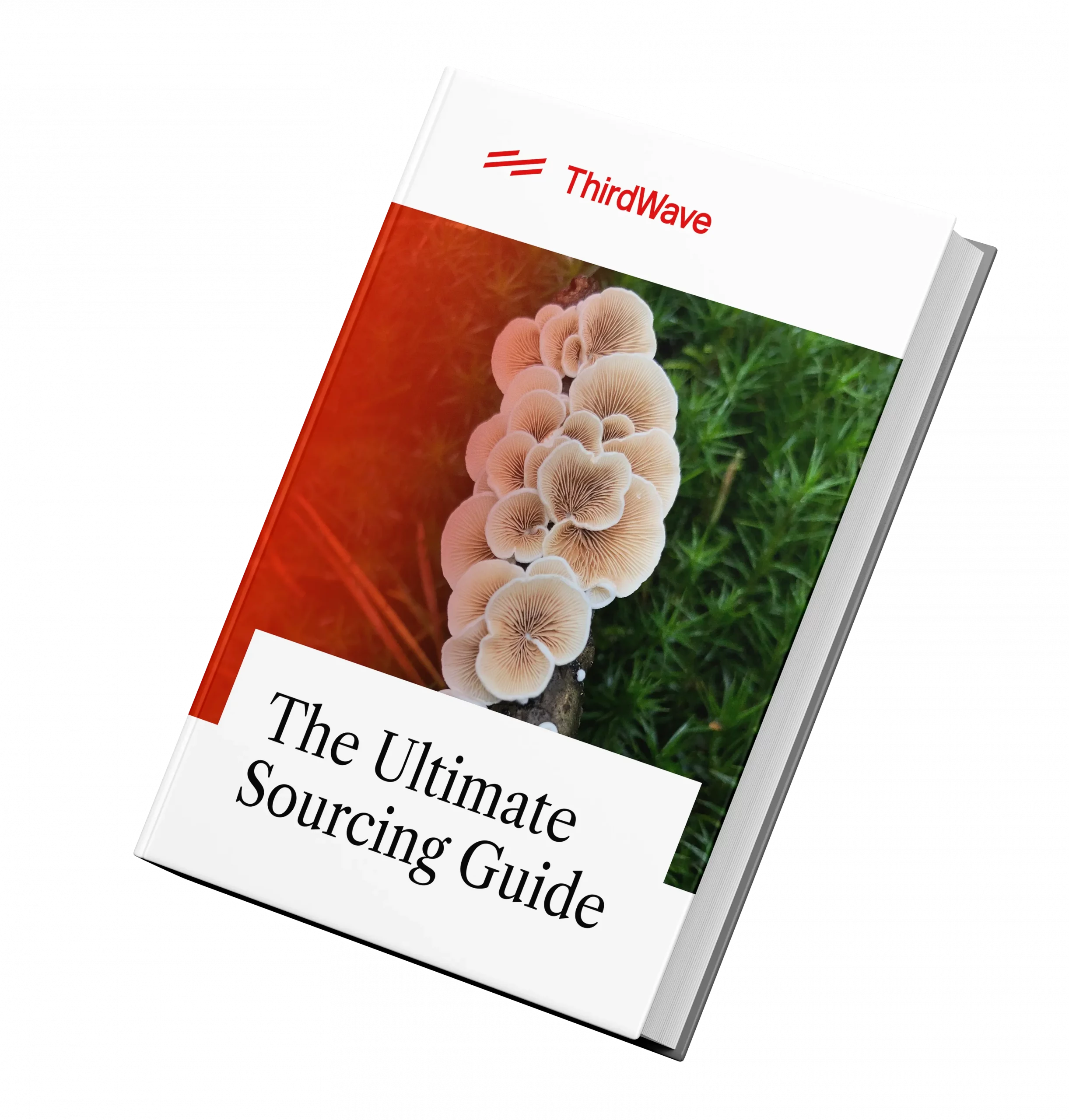
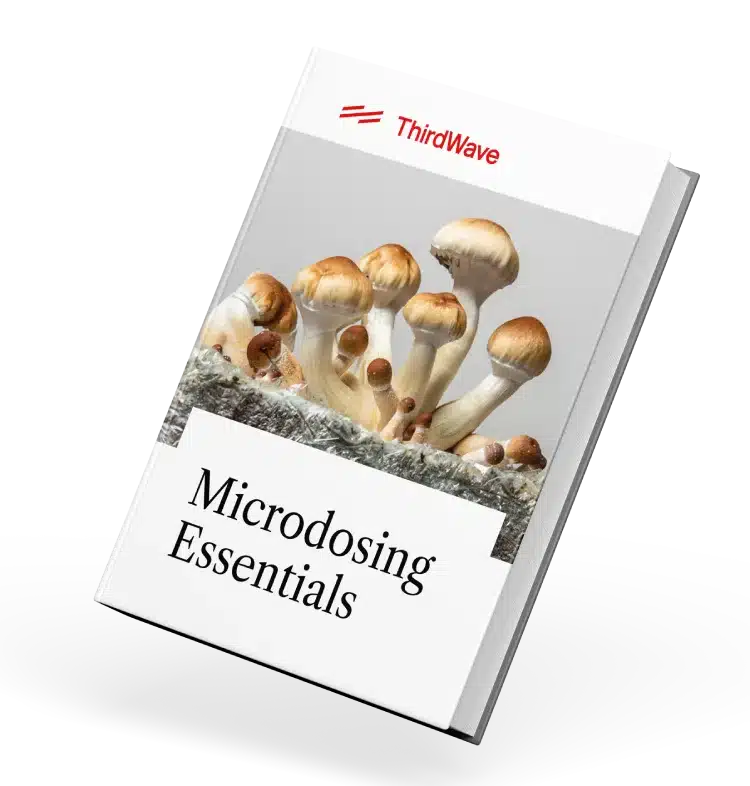
Beyond LSD and Psilocybin is a field. This guide will take you there.
In Third Wave’s Ultimate Guide to Safely Sourcing Psychedelics, you will discover an astonishing menu of psychedelic medicines…
…and how to source them without legal risk.
Benefits & Risks
04Potential Benefits
San Pedro has long been considered a powerful agent for healing and change, making it a central component of the shamanic ceremonies of many indigenous groups in the Americas. For many, a San Pedro journey offers deep insight into the self and the universe, giving one a greater sense of connection and spirituality. Mescaline is also known for fostering compassion and gratitude, while alleviating psychological disorders such as anxiety, depression, PTSD and addiction.
Mescaline has also been shown to help people solve problems, access their creativity, be more environmentally conscious, and improve learning. In its original use, the plant medicine was also used to treat a number of ailments, including snake bites, wounds, skin conditions, and general pain.
Risks
Due to its status as an internationally controlled substance, research into the harm potential of mescaline—especially long-term—has been limited. A lethal dose has never been identified, probably because it’s too high to be taken accidentally.[31] But that doesn’t mean it’s entirely safe. People have died as an indirect result of mescaline use, including suicides and one fatal case from excessive vomiting. That’s why it’s important to monitor dosing closely. According to the Erowid Mescaline Dosage page, the maximum safe amount for a heavy trip is about 500 mg of San Pedro.[32]. However, dosage depends on the consumption method. For pure San Pedro extracts, Erowid indicates the maximum dosage is much lower–somewhere between 75 – 100 mg.
A 2005 study into the ceremonial use of peyote among Native American populations found there to be no detrimental long-term effects. [33] It should be noted, however, that its use in other contexts may not be as safe (remember: set and setting). However, its use in other contexts may not be as safe—later studies have found an association between prior mental health problems and “bad trips.” Stil, mescaline appears to present little risk of flashbacks, or hallucinogen persisting perception disorder (HPPD).[34][35]
Most mescaline goes straight to the liver, so it may not be safe if you have liver problems (although it was given to many chronic, often severely liver-diseased alcoholics in the 1950s and ’60s without any obvious complications).[28] People with colon problems, high blood pressure, heart conditions, diabetes, or mental illness should also be cautious.[20][36] Although peyote (which also contains mescaline) is traditionally consumed by Huichol women during pregnancy, mescaline has been linked to fetal abnormalities and should also be avoided by pregnant or breastfeeding women. [37][38]
San Pedro may not be safe in combination with MAOIs (natural or synthetic), including the antidepressants phenelzine (Nardil) and tranylcypromine (Parnate). Some use MAOIs like moclobemide (Amira, Aurorix, Clobemix, Depnil, Manerix) to enhance the effects or prevent nausea but they may not be safe for everyone’s biochemistry. In fact, MAOIs may actually increase or induce nausea.[39]
It’s possible that non-MAOI antidepressants (such as SSRIs) may dampen San Pedro’s psychoactive effects, but as far we know, combining the two is not physically dangerous.[36]
Therapeutic Use
05Recoveries from mood disorders are easier to believe, and though research into mescaline’s psychotherapeutic potential is still limited, there is evidence to suggest its efficacy. Like with many other psychedelic drugs, mescaline’s potential as a therapeutic substance was studied in the 1950s and 1960s—particularly in combination with LSD. Early results found that mescaline could be used to successfully treat addiction and depression, but research was cut short when the drug was made illegal.
Renewed clinical interest in mescaline supports these mid-century findings. Recent studies suggest, for example, that mescaline may increase blood flow and activity in the prefrontal cortex, the area of the brain in charge of planning, problem-solving, emotional regulation, and behavior. Low activity in this area is linked to depression and anxiety, leading scientists to hypothesize that mescaline could help alleviate symptoms of these disorders.
Mescaline also activates serotonin and dopamine receptors, which could help boost mood and treat depression. In fact, one of the traditional therapeutic uses for peyote was as an antidepressant, and depression scores are reportedly low among members of the Native American Church, where peyote use is common.[40]
Some researchers have found that the antidepressant benefits of mescaline correlate to a subjects’ willingness to engage with the experience, to face themselves and to act upon the insights received. In one mid-century study, some of the most significant transformations or breakthroughs came about months after the experience itself, even if the initial psychedelic therapy session seemed to be a failure. In the context of psychotherapy, mescaline may also be useful for re-living or recalling repressed memories.
Mescaline could also help reduce suicidal thoughts, according to researchers at the University of Alabama. Using data from the National Survey on Drug Use and Health, the researchers found that people who have used a psychedelic drug at least once in their life show lower rates of suicidal thinking.
A 2013 study also found that lifetime mescaline or peyote use was significantly linked to a lower rate of agoraphobia, an anxiety disorder where subjects perceive their surrounding environment to be threatening.
Addiction is another promising application for mescaline’s therapeutic potential. As peyote, mescaline has long been used in traditional ceremonial contexts to treat alcoholism. It’s interesting to note that while alcohol abuse rates among the Navajo and other Native American tribes are said to be roughly twice the U.S. average, they are significantly lower among NAC members.[41][42][40] This correlation isn’t conclusive, of course, but research does suggest that there could be a more-than-casual link. In fact, a researcher at Harvard Medical School who has spent years studying peyote use found that the substance has reduced rates of alcoholism and drug abuse among Native Americans. He also concluded that the ceremonies themselves are an important element to the plant’s healing effects.
In traditional settings, mescaline has been used for alleviating symptoms of fever, headache, sunstroke, and arthritis.[43] Actually the cactus is traditionally seen as something of a cure-all and is sometimes taken daily. According to some Native Americans, the proper use of peyote renders all other medicines superfluous.[10] While there are key differences between modern Western medicine and the medico-religious approach of Native American mystics, clinical studies have supported mescaline’s role in pain relief, and in promoting the release of growth hormones.[44][15]
Personal Growth
06Anecdotal reports certainly support this statement. One user reports that he was able to bring all of his pain to the surface by stripping the wallpaper from his walls and painting his story across them. The experience illuminated his repressed struggle to be free from his mother, and he was astounded by the richness of meaning, as well as his own creativity.[2]
In fact, mescaline, like other psychedelics, is well known for enhancing creativity. In one study, a group of 27 men were given mescaline and asked to think about a problem they were facing at work, some of which had persisted for months. After just one dose, almost every participant either solved the problem for themselves or came up with new ways to approach it.[45] Mescaline may also boost learning capabilities: in another study, researchers found that the substance helped goldfish learn to avoid a shock more quickly. These findings support the prevailing view that mescaline and other psychedelics can enhance creativity. As the psychologist Stanley Krippner put it, “to invent something new, one cannot be completely conditioned or imprinted.”[46] Psychedelics like mescaline tend to dissolve preconceptions and elicit fresh perspectives on reality.
These new perspectives can often feel otherworldly to users. “Out-of-body journeys” are common with mescaline, often taking people to real-world locations; others experience a sense of induction into a “wider, mysterious, but very real [other] world that had been there all along.”[3]
San Pedro can also be helpful for strengthening interpersonal bonds or patching up family relations.[2] As an empathogenic, mescaline instills a “sense of universal understanding, a connection with other people, and the ability to come together and work out problems”—even problems that are usually suppressed.[4] Many people gain a newfound emotional fluency and ability to express their own emotions, as well as identify the struggles of others.[47] This sense of unity tends to define the San Pedro experience—unity with oneself, with other people and the natural world, and with all of existence at large.[12][48][49]
Microdosing
07While psilocybin and LSD are more commonly used for microdosing, mescaline is a good alternative. In fact, many users find mescaline more consistently reliable than LSD and psilocybin—and many also report greater results in personal growth and benefit. Mescaline also has a much longer history of use—and this goes for microdosing too. The (Rarámuri) Indians, for example, have used small amounts of peyote while hunting, allowing them to stalk deer for days on end without rest. [50]
In modern times, self-experimenters around the world are reporting a much wider range of benefits, including personal insights, mood enhancement, increased empathy and creativity, lifestyle changes, and even lucid dreams.
Some people have also found mescaline microdosing useful for treating the symptoms or even the underlying causes of depression, including experiencing a sense of peace and calm without the “numbness” of conventional antidepressant medications.[37] In fact, it tends to have the opposite effect of actually sharpening the senses and enhancing mental clarity.
Beyond cognitive effects, imperceptible doses of mescaline have also been shown to act as anti-inflammatory agents. In fact, this is one of the ancient medicinal uses of this compound. A 2008 study concluded that mescaline had “extraordinarily potent” anti-inflammatory effects, and a 2018 study found that psychedelics in general help regulate inflammatory pathways, which could prove therapeutic for a number of diseases, including asthma, atherosclerosis, inflammatory bowel disease, and retinal disease.
To learn more about microdosing mescaline, read our comprehensive guide.
Legality
08Prosecutions are rare, but they do happen. An Illinois man was, for example, sentenced to two and half years in prison for possessing multiple kilograms of powdered cactus with intent sell. Smaller amounts for personal use could also be prosecutable. In South Dakota, a man was charged with possession of a controlled substance for having just 30 g dried Peruvian torch (Trichocereus peruvianus).[51]
In some jurisdictions, the law is clearer, though. On June 4, 2019, the City of Oakland, CA voted unanimously to decriminalize all “entheogenic plants” containing indoleamines, tryptamines, and phenethylamines. This allows adults aged 21 years and older to use them medicinally or for any other reason without fear of criminal punishment. It also specifically decriminalizes (or rather deprioritizes for law enforcement) their cultivation and distribution.[52][53]
The situation is similar in Australia, New Zealand, the UK, and Germany, as well as many other European countries—except Switzerland, notably, which specifically prohibits both San Pedro and Peruvian torch.[51] In Canada, where peyote (and only peyote) is specifically exempt from the mescaline ban, prosecutors may need to show even stronger evidence of intent than elsewhere.[54]
In the Andean countries (e.g. Peru, Ecuador, Bolivia, etc.), San Pedro is generally legal, even as a psychedelic.[55]
It’s legal to cultivate San Pedro cactus in most countries, which is why you can regularly find them in garden centers. Learn how to harvest and grow San Pedro from home in our recent article.
Get Your FREE Ultimate Guide To Microdosing for Depression.
Sometimes hope comes in micro-doses. This guide will walk you through the process and how to best use the healing potential of psychedelics in a safe, intentional way to heal depression.
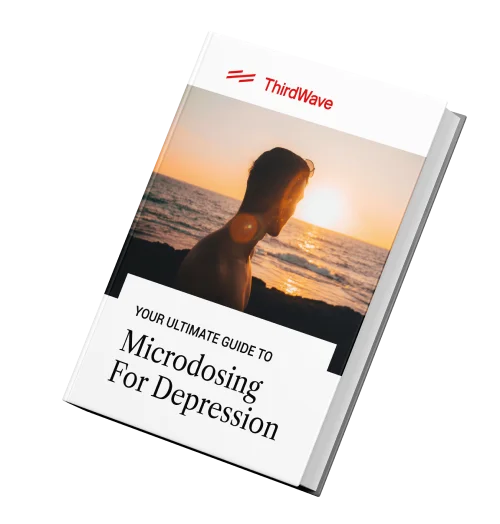

Get Your FREE Ultimate Guide To Microdosing for Depression.
Sometimes hope comes in micro-doses. This guide will walk you through the process and how to best use the healing potential of psychedelics in a safe, intentional way to heal depression.
Ethical Considerations
09Some see “exotic” spiritual practices such as San Pedro ceremonies as a replacement for the declining organized religions of the west. But these often provide only the appearance of authenticity compared to their familiar religious and spiritual practices. This has led to the perpetuation of the “noble savage” stereotype, which sees indigenous cultures denigrated by Westerners while select cultural practices are lauded.
Free market exchange for the purposes of monetary gain is often at odds with the traditional indigenous practices of the Amazon, too, introducing another layer of ethical complexity.
The issue of plant medicine commodification is widely debated. Some indigenous people and organizations believe that people that do not belong to a traditional lineage or who are considered “outsiders” should not use them at all. Many also suggest the substance’s use by Westerns is a form of cultural appropriation.
Indigenous groups have also spoken out against charging for ceremonies on religious grounds. However, some indigenous groups see charging for ceremonies as a way to uplift their communities, making many Amazonians willing participants in the plant medicine industry. Some even welcome the participation of foreigners and see the expansion of their ceremonies as positive.
However, as “psychedelic tourism” becomes a growing industry in South America, there is also concern over unsustainable harvesting practices. This has been the case with Peyote, which is now considered an at-risk species. San Pedro is more plentiful and grows back at a much faster rate than Peyote, but the destruction of its natural habitat is a threat to more than the plant—it’s a threat to the sacred practices that surround it.
Some do point out that the wisdom of the cultures of the Amazon basin will only be spread to all of humanity by bringing in outsiders. The force of globalization can’t be stopped at this point, and so San Pedro and other traditional practices will continue to be spread across the planet. It’s up to us outsiders to ensure that it’s done in a more respectful manner than it has been in many cases to date.
History & Stats
10Though the magico-religious and medicinal uses of San Pedro were suppressed by the Catholic conquistadors, the plant was not quite as villainized as peyote.[10][7][19] It’s possible that San Pedro’s early association with Christian symbols and holidays may have helped—in fact, it may have been strategic. San Pedro curanderismo (folk healing) ceremonies were held on June 24th, the Nativity of Saint John the Baptist, for example, while the name of the plant itself—San Pedro, Spanish for Saint Peter—is thought to imply that, like the Christian saint, the cactus “holds the keys to heaven.”[60][9][7]
But this foreign context was superimposed onto existing, pre-Hispanic/pre-Columbian ideas. Like Saints Peter and John, San Pedro had long been associated with water, albeit more specifically with the fertility of Pachamama (the ‘earth mother’) and mystical “flows between worlds.”[9] Hence the Ecuadorian name, aguacolla, is thought to have originated with the Spanish word agua (water) and Quechua word colla (queen), or else with another Quechua term denoting something hidden or occult—“hidden water,” in other words, or a portal to “another world.”[10]
Out-of-body journeys are a hallmark of San Pedro’s traditional use. Some even speculate that the Nazca Lines—the geoglyphs of southern Peru—were used as “sacred maps” for these disembodied flights.[9] Wind (symbolized by remolinos, or swirls) is also important to San Pedro, and may be seen as a portent of good health during ceremonies, or as the arrival of the spirit of the plant. This spirit is said to assume various forms when manifesting from the air in this way, including a gringo with blond hair, an Inca prince or princess, an animal (such as a jaguar), or San Pedro/Saint Peter himself.[10]
Prior to the (re-)discovery of San Pedro in 1945, botanists were unaware of any mescaline-containing cacti besides peyote. Although it was found to contain less of the psychedelic compound than peyote (<2% by dry weight and 0.12% fresh), San Pedro still represented a significant alternative source.[61][28] When mescaline and peyote were banned in the United States in 1970, however, San Pedro seems to have escaped lawmakers’ notice: people freely went on selling it as a “natural and legal” psychedelic and even mainstream garden centers continued to stock the plant.[22]
Nowadays San Pedro is used more or less as it (evidently) always has been—for spiritual and physical healing. Anthropologists and ethnographers familiar with its cultural context have helped to promote it worldwide.[10]
Current use
San Pedro is widely available in the West, but it’s often technically illegal for consumption (see Legality for details). Those who prefer to experience the plant in its native habitat can attend a growing number of ceremonies and retreats in South America.
Fortunately, San Pedro populations in the wild appear to be surviving this increased demand, unlike some other natural medicines (e.g. peyote, kambo)—perhaps because it grows back so rapidly when cut.[9] However, overharvesting in some “psychedelic tourism” regions could become unsustainable in the long term, especially in the absence of peyote.[10][19][62]
Myths
11“Peruvian torch cactus has 10 times the mescaline of San Pedro”
Adam Gottlieb made this claim in Peyote and Other Psychoactive Cacti (1977), but without any supporting evidence. In Pharmacotheon (1993), Jonathan Ott made a similar claim—that Peruvian torch has the highest concentration of any Trichocereus (/Echinopsis) species—but he seems to have missed opposing evidence.[44]
There’s actually some dispute as to whether “San Pedro” refers solely to T. pachanoi or to a range of Trichocereus (/Echinopsis) species, including T. peruvianus/E. peruviana (Peruvian torch). For clarity, most uses of the term refer to T. pachanoi alone, but it’s common to find other closely related species sold as San Pedro as well.
As for which is the strongest, it appears to be T. pachanoi. Analyses of T. peruvianus have found mescaline concentrations of up to 0.817% (dried whole plant), with some finding none at all. T. pachanoi, by contrast, has been found to contain up to 2.375%. Analyses of the mescaline-rich outer flesh alone have found the difference to be even greater: 0.24-0.25% in dried Peruvian torch skins (or up to 0.5% in the subspecies Puquiensis) and up to 4.7% in T. pachanoi.[24][63]
It should be noted, however, that mescaline content varies so much in both T. pachanoi and T. peruvianus that differences within each species may sometimes be greater than the differences between them. In other words, some Peruvian torch cuttings may well have ten times the mescaline content of some San Pedro cuttings—just not as a general rule.
FAQ
12What is mescaline?
Mescaline is a naturally occurring psychoactive alkaloid that is the main psychedelic compound in San Pedro and other psychedelic cacti native to the Americas, including peyote and Peruvian Torch. In its natural state, mescaline has been used in Native American religious and shamanic ceremonies for thousands of years.
Though it’s not as prevalent today, mescaline was the first psychedelic to enter mainstream Western culture—before the widespread use of LSD and psilocybin. More recently, the extracted compound has shown promise in the medical and psychotherapeutic treatment of substance abuse and depression, among other conditions.
Pure mescaline is usually available as a white or brownish crystalline powder, either loose or packed into capsules as a pill. It can also be found as a liquid solution or brew. However, compared to other psychedelics, mescaline extraction tends to be rare in most parts of the world.
To learn more, see the Ultimate Guide to Mescaline.
Can it be detected in a drug test?
Mescaline can be detected in the urine for one to four days after use, but it’s not included in either standard or extended drug screens.[64] Virtually all labs require a specific test for the substance, so unless your employer is a real stickler and specifically suspects San Pedro use, you should be fine.
Are there risks?
Neither San Pedro nor mescaline appear to have caused any deaths—not by their physical action, anyway. As with any psychedelic, poorly planned set and setting can lead to risks, including hazardous environments, being in public, etc. It may also cause problems for those with a history of mental illness, heart conditions, high blood pressure, and liver issues, as well as pregnant or breastfeeding women. For more information on using San Pedro safely, see the Safety and Toxicity section.
San Pedro can make you feel “crazy” in the short term (acute psychosis), especially if you don’t follow the 6Ss of psychedelic use. This is known as a “bad trip” and is unlikely to cause problems in the long term. Learning to handle anxiety and paranoia when it arises will help you get through any challenging experiences.
How do I take it?
San Pedro is best taken on an empty stomach as a brew, juice, or dried powder (i.e. in capsules or stirred into water).[1][25] Expect it to taste bitter, though—perhaps unbearably so. Chasing it down with fruit juice (especially unsweetened grapefruit juice) may help, but folk wisdom holds that “if one’s heart is pure, the bitterness will not be tasted.”[65] In other words, if you’re mindful of the bitterness, experiencing it without resistance, the gag reflex shouldn’t kick in.
Is it legal to grow San Pedro at home?
It’s legal to grow San Pedro in most countries, including the US and UK, but often not for human consumption (see Legality). It’s also very easy to grow from cuttings and can thrive in a variety of conditions—both indoors and out—although it prefers a lot more water than most cacti.[66] You can even graft fresh cuttings together (including cuttings from other species) by securing them for a few days with string.[9] Just be aware—if you’re growing San Pedro for mescaline, the common horticultural form of T. pachanoi (aka “pachanot”) has little to none of the compound.[24] See here for more info.
Did you know San Pedro is one of the most low-maintenance plants to grow and nurture? Check out our guide to growing san Pedro cactus to get started.
Where can I source San Pedro?
If you’d rather not grow your own San Pedro at home or forage through the Andes mountains, we get it–completely. Fortunately, you can find San Pedro cacti online and even in local garden centers. If you’re interested in sourcing San Pedro from trusted sellers, check out Third Wave’s Ultimate Guide to Sourcing Psychedelic Medicines.
How do I store San Pedro?
San Pedro should be dried and kept in a cold, dark, dry place. In these conditions, it can last thousands of years and still contain mescaline.
Can I microdose with San Pedro?
Yes! See our Essential Guide to Microdosing Mescaline.
Will it produce tolerance?
Tolerance to mescaline builds up almost immediately and takes roughly 7 days of abstinence to return to baseline. There is also a cross-tolerance effect with LSD and other psychedelics. This means they will have diminished effects for up to 7 days after your consumption of mescaline, and vice versa.[14]
Generally, though, mescaline isn’t habit-forming and many find their desire to use it actually diminishes with use over time.
Can I mix it with other drugs?
Avoid combining San Pedro with blood pressure medications, tramadol, immunomodulators, alcohol, and stimulants like cocaine and amphetamines.[38][67]
Anecdotally, people have reported good experiences mixing San Pedro with LSD or cannabis, among other psychoactive drugs.[9][5] It also appears to be low risk or positively synergistic with psilocybin, DMT, and ketamine. Tripsit has more information on safe drug combinations.
However, it’s always best to err on the side of caution and avoid combining mescaline with any other drug, including prescribed medications (if sensible), at least the first time you take it.
Learn about various psychedelic medicines, how to use them, and methods to safely acquire them with Third Wave’s Ultimate Guide to Sourcing Psychedelic Medicines.
Footnotes
13[1] Pachanoi, T. (2015, Feb 10). A Psychedelic Catalyst for Healing. Retrieved from https://erowid.org/plants/cacti/cacti_info1.shtml.
[2] Psilocybe. (2003, Aug 22). IN The Art: An Experience with Cacti – T. pachanoi (exp26305). Retrieved from https://erowid.org/experiences/exp.php?ID=26305.
[3] Antun. (2017, Mar 15). The Domain of This Plant Is Space: An Experience with Cacti – T. pachanoi (exp109945). Retrieved from https://erowid.org/experiences/exp.php?ID=109945.
[4] SlipKnot420. (2004, Dec 3). Let’s Spend a Lifetime Here: An Experience with Cacti – T. pachanoi (exp37131). Retrieved from https://erowid.org/experiences/exp.php?ID=37131.
[5] Peaceful_Tripper420. (2007, Mar 17). Tranquil Visions in the Heart of Nature: An Experience with Cacti – T. pachanoi (exp42192). Retrieved from https://erowid.org/experiences/exp.php?ID=42192.
[6] Look to the Sky. (2017, Jul 9). War Amongst the Clouds: An Experience with Cacti – San Pedro (exp100145). Retrieved from https://erowid.org/experiences/exp.php?ID=100145.
[7] Schultes, R.E., Hofmann, A., Rätsch, C. (2001). Plants of the Gods: Their Sacred, Healing, and Hallucinogenic Powers. Rochester, VT: Healing Arts Press.
[8] Sharon, D. (1972). The San Pedro Cactus in Peruvian Folk Healing. In Furst, P.T. (Ed.), Flesh of the Gods: The Ritual Use of Hallucinogens (pp.114-135). New York, NY: Praeger Publishers.
[9] Rätsch, C. (2005). The Encyclopedia of Psychoactive Plants: Ethnopharmacology and Its Applications. Rochester, VT: Inner Traditions/Bear.
[10] Glass-Coffin, B. (2010). Shamanism and San Pedro through Time: Some Notes on the Archaeology, History, and Continued Use of an Entheogen in Northern Peru. Anthropology of Consciousness, 21(1):58-82. Retrieved from https://doi.org/10.1111/j.1556-3537.2010.01021.x
[11] Heaven, R. (2009). The Hummingbird’s Journey to God: Perspectives on San Pedro, the Cactus of Vision & Andean Soul Healing Methods. Winchester, UK: O Books.
[12] Anopseudonym. (2010, Apr 7). Metamorphosis: An Experience with Cacti – T. pachanoi (exp78714). https://erowid.org/experiences/exp.php?ID=78714.
[13] Smythies, J.R. (1953). The Mescaline Phenomena. The British Journal for the Philosophy of Science, 3(12):339-347. https://doi.org/10.1093/bjps/III.12.339.
[14] PsychonautWiki. (2018, Feb 21). Mescaline. Retrieved from https://psychonautwiki.org/wiki/Mescaline.
[15] Dobkin, M. (1969). Folk Curing With a Psychedelic Cactus in the North Coast of Peru. International Journal of Social Psychiatry, 15(1):23-32. https://doi.org/10.1177/002076406901500102.
[16] Dobkin, M. (1968). Trichocereus pachanoi—A Mescaline Cactus Used in Folk Healing in Peru. Economic Botany, 22(2):191-194. Retrieved from https://www.jstor.org/stable/4252948
[17] Davis, E.W. (1983). Sacred Plants of the San Pedro Cult. Botanical Museum Leaflets, 29(4):367-383. Retrieved from https://www.jstor.org/stable/41762855
[18] Erowid. (2015, Feb 10). Peruvian San Pedro Use. Retrieved from https://erowid.org/plants/cacti/cacti_culture1.shtml.
[19] Bussmann, R.W., Sharon, D. (2006). Traditional medicinal plant use in Northern Peru: tracking two thousand years of healing culture. Journal of Ethnobiology and Ethnomedicine, 2:47. https://dx.doi.org/10.1186%2F1746-4269-2-47
[20] Heaven, R. (2015, Feb 10). San Pedro, The Miracle Healer. Retrieved from https://erowid.org/plants/cacti/cacti_writings1.shtml.
[21] Sharon, D. (1978). Wizard of the Four Winds: A Shaman’s Story. New York, NY: Free Press.
[22] Crosby, D.M., McLaughlin, J.L. (1973). Cactus Alkaloids. XIX. Crystallization of Mescaline HCl and 3-Methoxytyramine HCl from Trichocereus pachanoi. Lloydia, 36(4):416-418. https://www.semanticscholar.org/paper/Cactus-alkaloids.-XIX.-Crystallization-of-mescaline-Crosby-McLaughlin/61647b01cf0877ff0a4ed326ddc4237e09f6c982
[23] Barton, S. (1994, Sep). San Pedro Potency FAQ. Retrieved from https://erowid.org/plants/cacti/cacti_sanpedro_potency_faq.shtml.
[24] Trout, K. (2014). Cactus Chemistry By Species. Mydriatic Productions.
[25] Erowid. (2015, Feb 20). San Pedro Dosage Discussion. Retrieved from https://erowid.org/plants/cacti/cacti_dose1.shtml.
[26] Erowid. (2015, Feb 10). Visionary Cactus Guide — Tricocereus. Retrieved from https://erowid.org/plants/cacti/cacti_guide/cacti_guide_trichoce.shtml.
[27] Ask Erowid. (2002, Feb 25). Is it true that only some parts of a San Pedro cactus contain Mescaline? Retrieved from https://www.erowid.org/ask/ask.php?ID=2942.
[28] Stafford, P. (1992). Psychedelics Encyclopedia (3rd ed.). Berkeley, CA: Ronin Publishing.
[29] Kovacic, P., Somanathan, R. (2009). Novel, unifying mechanism for mescaline in the central nervous system. Oxidative Medicine and Cellular Longevity, 2(4):181-190. https://doi.org/10.4161/oxim.2.4.9380.
[30] Ferri, S., Arrigo Reina, R., Spadaro, C., Braga, P. (1977). 6-Hydroxydopamine Inhibits Some Effects of Mescaline Centrally Administered to Rabbits. Psychopharmacology, 55:147-149. Retrieved from https://doi.org/10.1007/bf01457850
[31] Ask Erowid. (2001, Mar 8). Can mescaline kill? Retrieved from https://erowid.org/ask/ask.php?ID=1778.
[32] Brown, R.E. (1973). The Psychedelic Guide to the Preparation of the Eucharist. Austin, TX: Linga Sharira Incense Co.
[33] Halpern, J.H., Sherwood, A.R., Hudson, J.I., Yurgelun-Todd, D., Pope, H.G. Jr. (2005). Psychological and cognitive effects of long-term peyote use among Native Americans. Biological Psychiatry, 58(8):624-31. https://doi.org/10.1016/j.biopsych.2005.06.038.
[34] Koupilová, M., Henrink, J., Krs, O. (1999). Influencing of spatial memory in rats by DSP-4 and mescaline. Acta Medica (Hradec Kralove), 42(2):69-72. Retrieved from https://pubmed.ncbi.nlm.nih.gov/10596419/
[35] Molinengo, L., Cassone, M.C., Baroli, A., Orsetti, M. (1986). Mescaline action on “memory decay” and “problem solving” behavior in the rat. Progress in Neuro-Psychopharmacology & Biological Psychiatry, 10(6):709-15. https://doi.org/10.1016/0278-5846(86)90055-2
[36] steppingintofreedom. San Pedro (Huachuma) and prescribed medication. Retrieved from http://www.steppingintofreedom.com/huachuma-and-prescribed-medication.
[37] Meyer, S. (2011, May 24). Should I Use Peyote If I Am Pregnant or Breastfeeding? Retrieved from http://nativemothering.com/2011/05/should-i-use-peyote-if-i-am-pregnant-or-breastfeeding/.
[38] Natural Standard. (2011). Peyote. Retrieved from http://www.healthprioritiesinc.com/ns/DisplayMonograph.asp?StoreID=c8ad0990cf0d44a5bac9118cf4159a55&DocID=bottomline-peyote.
[39] Ask Erowid. (2007, Aug 3). Are MAOIs dangerous in combination with some Trichocereus cacti? Retrieved from https://www.erowid.org/ask/ask.php?ID=3089.
[40] Horgan, J. (2009, Jan 12). Curing Drug and Alcohol Addiction with Peyote. Retrieved from http://discovermagazine.com/2009/the-brain/peyote.
[41] Winkelman, M.J. (2015). Psychedelics as Medicines for Substance Abuse Rehabilitation: Evaluating Treatments with LSD, Peyote, Ibogaine and Ayahuasca. Current Drug Abuse Reviews, 7(2):101-16. https://doi.org/10.2174/1874473708666150107120011.
[42] Pacific Standard Staff. (2016, Oct 10). What’s behind the myth of Native American alcoholism? Retrieved from https://psmag.com/news/whats-behind-the-myth-of-native-american-alcoholism.
[43] Garuda444. (2017, Jan 6). Spirit Animal Communion: An Experience with Cacti – T. pachanoi (exp96587). Retrieved from https://erowid.org/experiences/exp.php?ID=96587.
[44] Erowid, F. (2001). A Look at the Mescaline Content of T. peruvianus and T. pachanoi. Erowid Extracts, 2:20-21. Retrieved from https://erowid.org/plants/cacti/cacti_article1.shtml.
[45] Smith, P. The Diverging Mind. Retrieved from http://volteface.me/features/the-diverging-mind/.
[46] Krippner, S. (1969). Mescaline, Psilocybin, and Creative Artists. Retrieved from http://www.psychedelic-library.org/artist.htm.
[47] a soul. (2005, Jul 26). Enlightenment: An Experience with Cacti – T. pachanoi (exp40970). Retrieved from https://erowid.org/experiences/exp.php?ID=40970.
[48] Han Solo. (2007, Jan 11). In the Embrace of Pachamama: An Experience with Cacti – T. pachanoi (exp50479). Retrieved from https://erowid.org/experiences/exp.php?ID=50479.
[49] Visionary. (2007, Apr 12). A Message from the Plant: An Experience with Cacti – T. pachanoi & Meditation (exp56932). Retrieved from https://erowid.org/experiences/exp.php?ID=56932.
[50] Gottlieb, A. (2009). Peyote and Other Psychoactive Cacti. Berkeley, CA: Ronin Publishing.
[51] Erowid. (2016, Sep 15). Mescaline-containing Cacti – Legal Status. Retrieved from https://erowid.org/plants/cacti/cacti_law.shtml.
[52] AP. (2019, Jun 5). The Latest: Oakland 2nd US city to legalize magic mushrooms. Retrieved from https://www.apnews.com/ff023dfbf4534eba8622f504d272ff00.
[53] Decriminalize Nature Oakland. Resolution. Retrieved from https://www.decriminalizenature.org/dno-resolution.
[54] Controlled Drugs and Substances Act (S. C. 1996, c. 19). Schedule III. Retrieved from http://laws.justice.gc.ca/eng/acts/C-38.8/page-14.html#docCont.
[55] Drug Law Reform in Latin America. (2016). Country information. Retrieved from http://www.druglawreform.info/en/country-information.
[56] Johnson, C. (2018). Magic Medicine. Beverly, MA: Fair Winds Press.
[57] Carod-Artal, F.J., Vázquez-Cabrera, C.B. (2006). Mescaline and the San Pedro cactus ritual: archaeological and ethnographic evidence in northern Peru. Revista de neurologia, 42(8):489-98. Retrieved from https://pubmed.ncbi.nlm.nih.gov/16625512/
[58] Cordy-Collins, A. (1982). Psychoactive Painted Peruvian Plants: The Shamanism Textile. Journal of Ethnobiology, 2(2):144-153. Retrieved from https://ethnobiology.org/sites/default/files/pdfs/JoE/2-2/cordy-Collins1982.pdf
[59] Sharon, D. (2001). Ethnoarchaeological evidence for San Pedro (Trichocereus pachanoi) use in northern Peru. Eleusis, 5:13-59. Retrieved from https://www.researchgate.net/publication/7154032_Mescaline_and_the_San_Pedro_cactus_ritual_Archaeological_and_ethnographic_evidence_in_northern_Peru
[60] Sharon, D. (2000). Shamanism & the Sacred Cactus: Ethnoarchaeological Evidence for San Pedro Use in Northern Peru. San Diego, CA: San Diego Museum of Man.
[61] Trenary, K. History Of Mescaline. Retrieved from https://mycotopia.net/topic/51844-the-history-of-mescaline-by-klaus-trenary/.
[62] Downer, C.C. (2006, Feb 6). INSIGHTS: Mining Peru’s Andean Forests Puts Unique Species, Ecosystem at Risk. Retrieved from http://ens-newswire.com/2017/04/06/insights-mining-perus-andean-forests-puts-unique-species-ecosystem-at-risk/.
[63] Ogunbodede, O., McCombs, D., Trout, K., Daley, P., Terry, M. (2010). New mescaline concentrations from 14 taxa/cultivars of Echinopsis spp. (Cactaceae) (“San Pedro”) and their relevance to shamanic practice. Journal of Ethnopharmacology, 131(2):356-362. Retrieved from https://doi.org/10.1016/j.jep.2010.07.021
[64] Erowid. (2015, Feb 10). Mescaline – Drug Testing. Retrieved from https://erowid.org/chemicals/mescaline/mescaline_testing.shtml.
[65] Gottlieb, A. (1997). Peyote and Other Psychoactive Cacti. Berkeley, CA: Ronin Publishing.
[66] AlbertKLloyd. (2014, Jan 13). correcting san pedro myths (work in progress) [Online forum comment]. Message posted to https://www.dmt-nexus.me/forum/default.aspx?g=posts&t=52630.
[67] Therapeutic Research Faculty. (2009). PEYOTE: Uses, Side Effects, Interactions and Warnings – WebMD. Retrieved from https://www.webmd.com/vitamins-supplements/ingredientmono-473-peyote.aspx?activeingredientid=473&activeingredientname=peyote.
Beyond LSD and Psilocybin is a field. This guide will take you there.
In Third Wave’s Ultimate Guide to Safely Sourcing Psychedelics, you will discover an astonishing menu of psychedelic medicines…
…and how to source them without legal risk.


Beyond LSD and Psilocybin is a field. This guide will take you there.
In Third Wave’s Ultimate Guide to Safely Sourcing Psychedelics, you will discover an astonishing menu of psychedelic medicines…
…and how to source them without legal risk.

